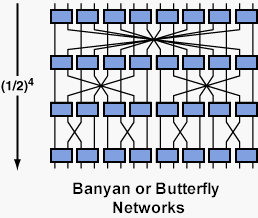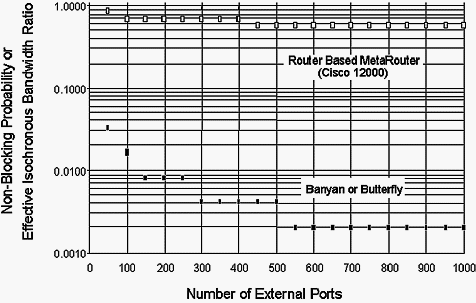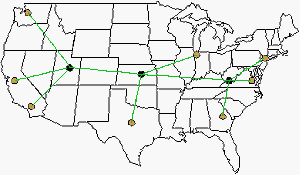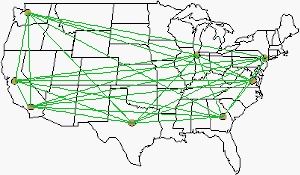Output Port Blocking
|
|
Output Port Blocking |
|
|

|
|
||
|
The probability of a Butterfly switching module not blocking is 1/2. A 16 input Butterfly multi-stage network requires 4 levels. The overall non-blocking probability is thus (1/2)4 = 0.0625, or 6.25% |
The probability of a 12 port MetaRouter switching module requires 3 levels. The overall non-blocking probability is thus (5/6)3 = 0.578, or 57.8%. |
|
|
|
The non-blocking probability for a 532 port MetaRouter is 0.57 while the non-blocking probability for a 512 port Banyan or Butterfly Network is 0.0037. The probability that a packet will traverse a 532 port MetaRouter without collision is more than 2 orders of a magnitude larger than the probability that a packet will traverse a 512 port Banyan or Butterfly. The larger the non-blocking probability, the larger the effective isochronous bandwidth. |

|
| Bottom line: The larger the fanout, the smaller, the number of levels, the greater the effective isochronous bandwidth. |
|
|

|

|
||
|
Output blocking also affects the
topology of the Internet. Currently the Internet is designed to maximize
the connectivity rather the end-to-end bandwidth. The effective bandwidth
of the Internet goes down exponentially with the number of hops. |
The fiber network will physically remain a backbone, however a virtual fully connected network will be constructed out of wavelength division multiplexed channels and digital access crossconnects. |
|
|
|